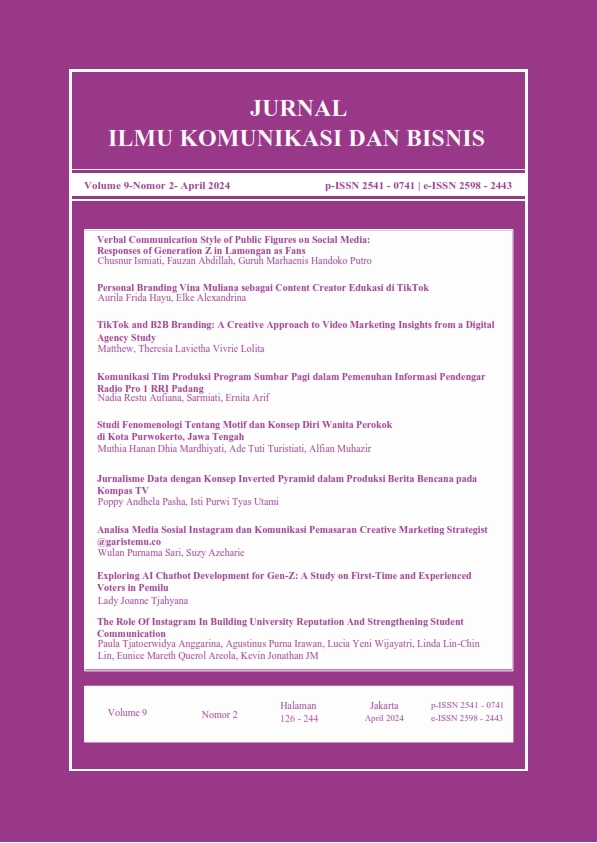The Role of Instagram In Building University Reputation and Strengthening Student Communication
DOI:
https://doi.org/10.36914/mhcce667Keywords:
Communication channels, Social Media, Instagram, University ReputationAbstract
University reputation can be obtained through good communication with all stakeholders. One of the communication channels that can be used to convey information and communication is Instagram social media. Instagram is one of the options for universities in supporting good communication to build and strengthen the reputation of the institution. This study aims to analyse student preferences for Instagram communication channels in conveying information and strengthening institutional reputation. The research method used is descriptive quantitative method, which combines surveys through questionnaires and interviews. The results showed that Instagram is an effective communication channel to deliver information, increase student engagement, and provide a space to evaluate campus performance through feedback. The best performing content based on audience feedback is the promotion pillar, followed by the engagement pillar, and the education pillar. The college needs to maintain the quality of content and design, increase visual variety, and ensure the information is more relevant and meets the needs of the audience. The results of this study can serve as a basis for evaluating Instagram management at a university, and serve as a reference for future research.










